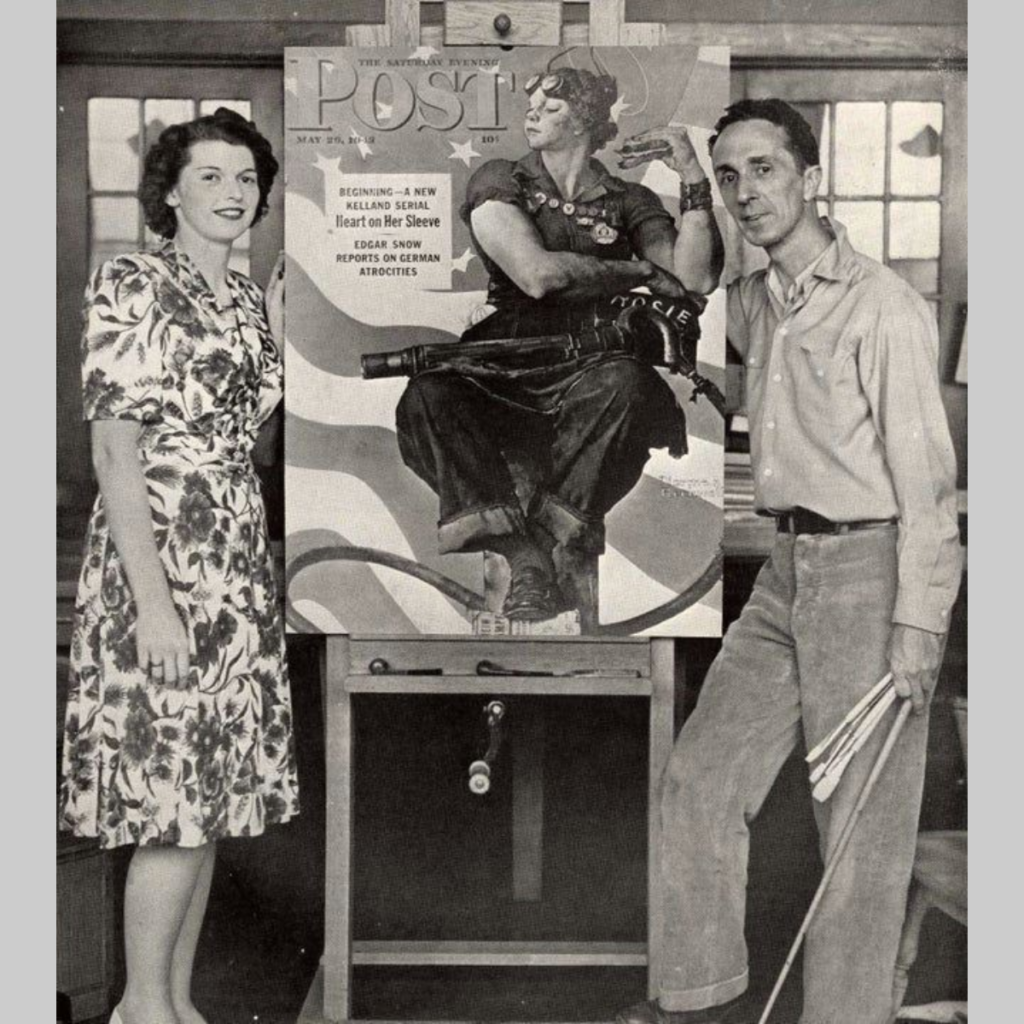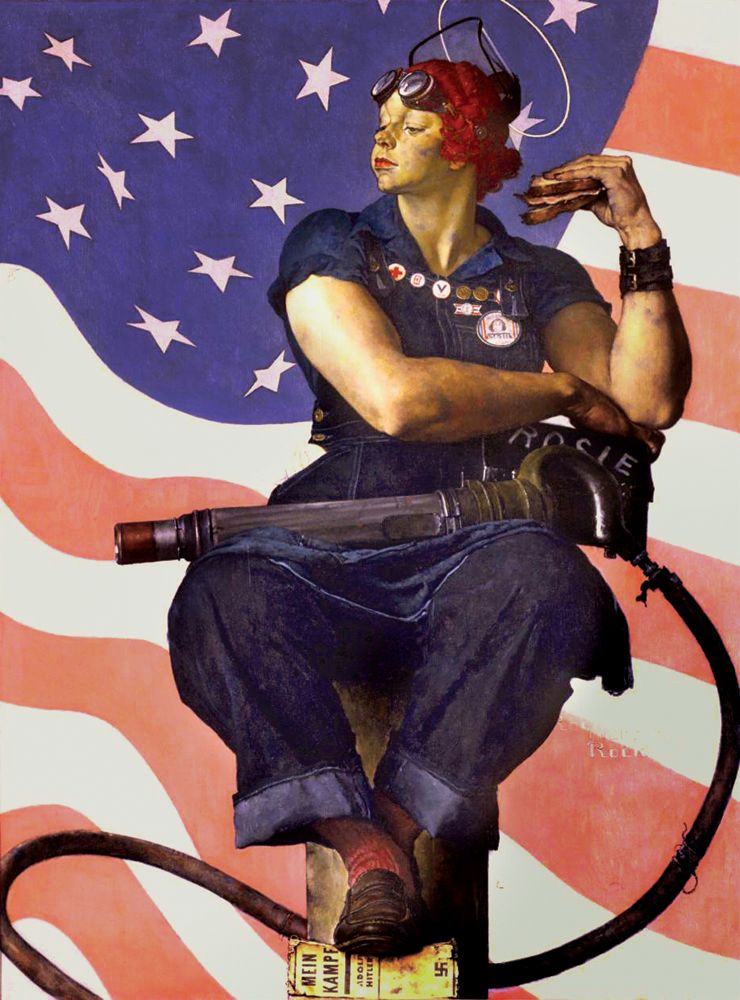
Painted for the cover of the May 29, 1943 edition of The Saturday Evening Post, Norman Rockwell’s “Rosie the Riveter” gave visual form to this phenomenon and became an iconic image of American popular culture.
Rockwell portrayed Rosie as a monumental figure clad in overalls and a work-shirt with the sleeves rolled up to reveal her powerful, muscular arms. Seated against the backdrop of a rippling American flag, she is shown pausing for lunch, with a riveting machine and a tin lunch box balanced on her substantial lap, her visor and goggles pushed back on her head and a ham sandwich clasped in her hand.

Despite her massive bulk, sturdy work clothes and the smudges on her arms and cheeks, Rosie’s painted fingernails, lipstick and the tidy arrangement of her bright red curls wittily convey her underlying femininity.
Pausing between bites, she gazes into the distance with a detached air of supreme self-assurance, while casually crushing a tattered copy of Adolf Hitler’s Mein Kampf under her feet.
Rockwell found the model for Rosie in Mary Doyle (now Mary Keefe), a nineteen year old telephone operator in Arlington, Vermont. Mrs. Keefe saw the final composition for the first time during a trip to a newsstand in Bennington, Vermont, where she happened to see a poster advertising the May 29, 1943 edition of The Saturday Evening Post.

She remembers being rather shocked by Rockwell’s transformation of her slim figure into Rosie’s overly muscular physique, but adds that the artist later called her to apologize for his exaggerated enlargement of her size.
Many Post readers quickly observed that Rockwell found the source for Rosie’s monumental dignity and classical enthronement in Michelangelo’s depiction of the prophet Isaiah from the Sistine Chapel ceiling.